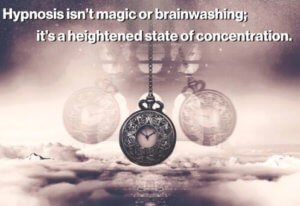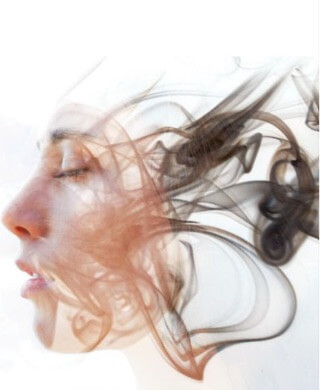Is hypnosis all in your head? This age-old technique often is shrouded in mystery. What is it, how does it work and can it help you fall asleep?
Editor’s note: Savvy mattress retailers want to do everything they can to help their customers sleep better, including offering them sound advice and tips. Feel free to share this great guidance from Better Sleep Council spokeswoman Lissa Coffey with your shoppers (with credit given, of course). The BSC is the consumer-education arm of the International Sleep Products Association.

“You are feeling sleepy … verrry sleepy …” Those are the words we think of when we imagine being hypnotized. You may have seen a stage show during which a hypnotist puts people from the audience into a trance and then gets them to act silly. But could hypnosis be used to help us sleep better? For many, the answer is a resounding yes.
I studied hypnotherapy and received my certification years ago. I’ve found this is an effective tool to use in many areas of our lives.
Hypnotherapy has been used to treat various ailments since the 18th century, although hypnosis itself dates back to prehistoric days. Hypnosis isn’t magic or brainwashing; it’s a heightened state of concentration. Many times we’ve been in a state of hypnosis and weren’t even aware of it — for example, when we are engrossed in a good movie or focused on solving a problem. That’s when the rest of the world somehow goes away. We might be called for dinner and not hear it. That’s how hypnosis works.
Hypnosis often is performed by a certified hypnotherapist, who guides people into a trancelike state. The therapist then can make suggestions to the subconscious mind to help people improve their golf game, increase confidence levels, decrease anxiety, overcome a fear or attain other goals, such as getting a restful night’s sleep. But we don’t necessarily need a hypnotherapist to achieve these results. We can use self-hypnosis, a technique similar to guided meditation.
When we have trouble getting to sleep, it’s likely we are having trouble relaxing for one reason or another. We may be stressed, worried or feeling anxious. Self-hypnosis is one way we can induce the relaxation response that triggers sleep. Hypnosis helps us refocus our thoughts by concentrating instead on certain words, music or a soothing voice. In this way, we basically retrain the brain to once again relax when it is time to sleep. We provide the mind and body all they need to calmly drift off into a pleasant sleep state.
The benefit, of course, is that when we awaken from a great night’s sleep, we feel more energetic and focused. So, we are naturally more productive and motivated.
Trying techniques
There are many self-hypnosis apps and recordings available, and you can try some to see what works for you. Some of these programs use binaural beats, or a combination of sound frequencies, as background sounds — similar to white noise. Before sleep, the brain must achieve the delta frequency. Binaural beats are used as a tool to help sync the brainwaves to that delta frequency.

Autogenic training, also called autogenic therapy, is one form of self-hypnosis. This relaxation technique was developed by Johannes Schulz, a German psychiatrist, in 1932. With autogenics, we gradually learn to relax the limbs, heart and breath through a series of sessions. The idea is to induce a feeling of warmth throughout most of the body and a feeling of coolness in the forehead. It is a way for us to influence our own autonomic nervous system to counterbalance the effects of stress. The autogenics technique creates a physiological response, preparing us for sleep.
To practice autogenics, follow these guidelines:
- Practice alone, in quiet, or with soft background music or environmental sounds.
- Wear loose, comfortable clothing and no shoes.
- Practice before meals so that the digestive process doesn’t interfere with the relaxation process.
- Take your time; do not rush.
- Sit comfortably in a chair or lie down.
If you are practicing at bedtime, make sure your room is conducive for sleep, and that your mattress is comfortable and supportive.
Now, follow these six steps:
- Warm-up: Begin slow, deep breathing. Inhale for one beat and exhale for two. With each breath, increase the duration of the inhales and exhales, always doubling the length of time for the exhales. Breath to six counts in and 12 counts out. Then reverse the process all the way back down to one count in and two counts out.
- Heavy and warm: Heaviness and warmth represent muscular relaxation. Visualize and actually feel your limbs becoming heavy. Mentally say to yourself on the inhale, “My arms and legs are,” and on the exhale, “heavy and warm.” Repeat two more times.
- A calm heart: Mentally say to yourself on the inhale, “My heartbeat and breathing are,” and on the exhale say, “calm and steady.” Repeat two more times.
- A warm stomach: This helps you to add a central warmth and peace to your body. Mentally say to yourself on the inhale, “My stomach is,” and on the exhale, “soft and warm.” Repeat two more times.
- A cool forehead: This helps you provide a calm, stabilizing coolness to the forehead. Mentally say to yourself on the inhale, “My forehead is,” and on the exhale, “cool.” Repeat two more times.
- Completion: Mentally say to yourself on the inhale, “I feel,” and on the exhale, “supremely calm.” Repeat two more times.
It is important to memorize this script so you don’t have to spend energy trying to remember the words. Many people find it beneficial to record their own voice with the prompts, and this may be a good way to start. The repetition of the words helps lead your body and mind into a calm, relaxed state, which in turns promotes peaceful sleep.
When you are first learning autogenics, practice this routine three times throughout the day. Before breakfast, before lunchtime and right before bedtime to help you fall asleep. Give it some time to see the best results. Most people notice a big, positive shift in their sleep patterns after a few weeks of practicing autogenics.
To Hear More
Listen to this hypnosis for sleep audio Lissa Coffey recorded just for Sleep Savvy:
Important note
Never listen to any hypnosis recording or try to use self-hypnosis while you are driving or operating heavy machinery. Also, hypnosis is not recommended for those with epilepsy or for those with any kind of psychosis. Always follow the advice of your health professional. Sweet dreams!

Lissa Coffey is a relationship expert, author of several books and broadcast journalist. A spokeswoman for the Better Sleep Council, she stars in several videos that offer sleep and mattress-shopping tips for consumers.







